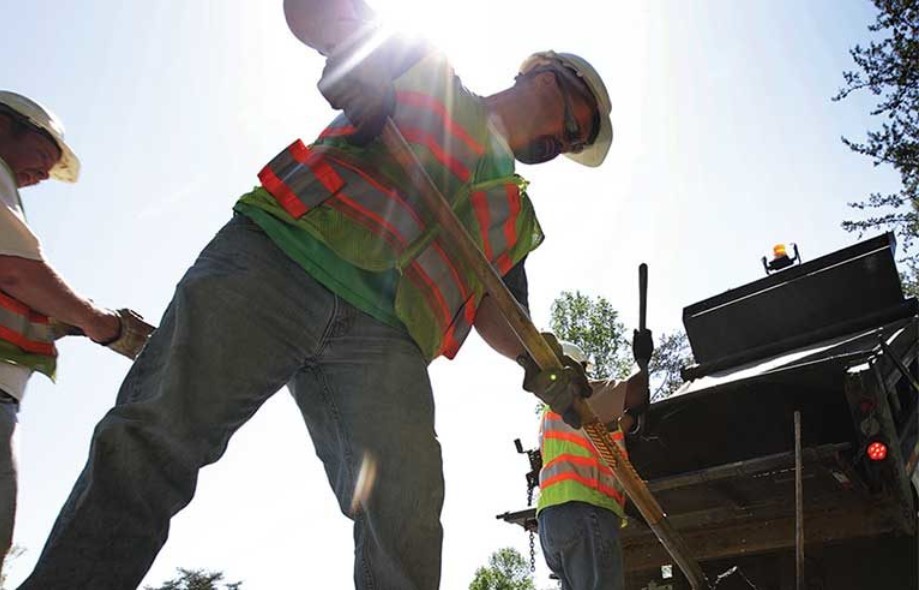OSHA Publishes Proposed Rule on Indoor/Outdoor Heat
Originally Published by: Safety and Health Magazine — August 30, 2024
SBCA appreciates your input; please email us if you have any comments or corrections to this article.
OSHA is seeking comment on a proposed rule aimed at protecting indoor and outdoor workers from heat-related illnesses.
According to a notice of proposed rulemaking published Aug. 30, employers would have to formulate and implement a heat-related illness and injury prevention plan for each worksite. That plan would need to be in writing if the employer has more than 10 employees.

Photo: Virginia Department of Transportation/Flickr
Employer requirements under the standard – or “initial heat trigger” – would go into effect when the heat index in the work area reaches 80° F or the wet bulb globe temperature is “equal to the NIOSH Recommended Alert Limit.”
Wet bulb globe temperature is a metric that combines air temperature, humidity, radiant heat from sunlight or artificial heat sources, cloud cover, the angle of the sun, and air movement such as wind speed. WBGT is measured in the sun as opposed to heat index, which is measured in the shade, according to the National Weather Service.
OSHA’s requirements include:
- Monitoring employees for heat stress
- Identifying heat hazards
- Providing water (1 quart per employee per hour) and rest breaks in shaded or air-conditioned areas
- Indoor work area controls
- Acclimatization
- “Effective two-way communication” between employer and employees
- Maintenance of personal protective equipment for heat
Additional requirements – known as the “high heat trigger” – would go into effect when the heat index reaches 90° F or the WBGT is equal to NIOSH’s Recommended Alert Limit. Those requirements include hazard alerts, a minimum 15-minute paid rest break for employees every two hours, and observing employees for signs and symptoms of heat-related illness using:
- A buddy system in which co-workers monitor one other.
- Observation by a supervisor or heat safety coordinator – “with no more than 20 employees observed per supervisor or heat safety coordinator.”
- Two-way communication for lone workers.
Employers would also have to place warning signs by indoor work areas where ambient temperatures regularly exceed 120° F.
The standard wouldn’t apply to:
- Work activities for which there is “no reasonable expectation of exposure at or above the initial heat trigger.”
- Exposure at or above the “initial heat trigger” for 15 minutes or less in any 60-minute period.
- Organizations whose primary function is firefighting; emergency response activities of workplace emergency response teams, emergency medical services, or technical search and rescue; and any emergency response activities already covered under other federal laws.
- Work activities performed in indoor areas or vehicles where air conditioning keeps the ambient temperature below 80° F.
- Telework
- Sedentary work activities at indoor work areas that only involve some combination of the following: sitting, occasional standing and walking for brief periods, and occasional lifting of objects weighing less than 10 pounds.
OSHA published a draft of the proposed rule on July 2, a day after the White House Office of Information and Regulatory Affairs finished its review of the proposal that began June 11.
In May, OSHA’s Advisory Committee on Construction Safety and Health unanimously approved the proposed rule. The proposal was also examined by a Small Business Advocacy Review panel.
The deadline to comment on the NPRM or request a public hearing is Dec. 30.
